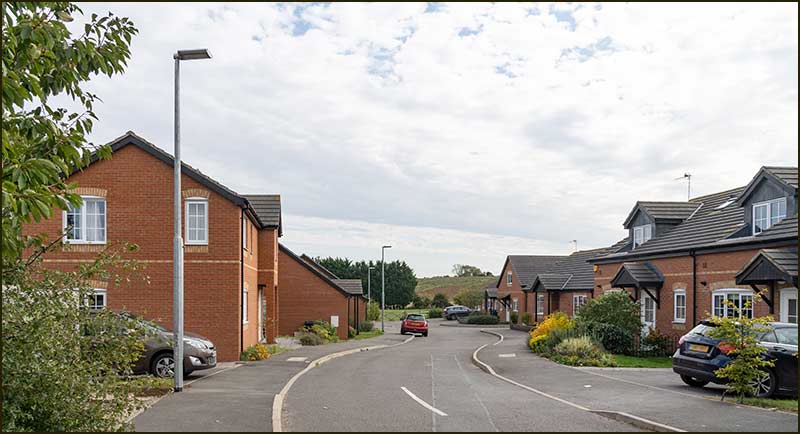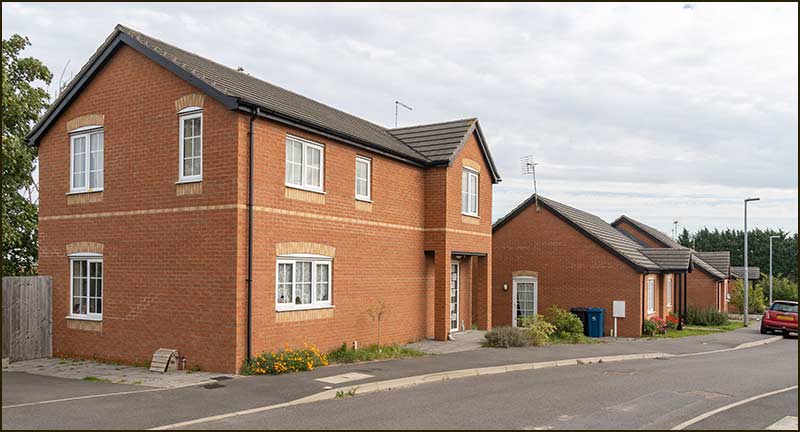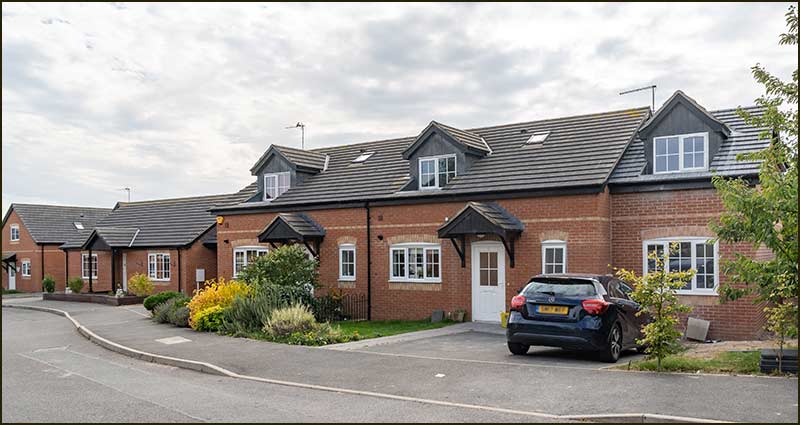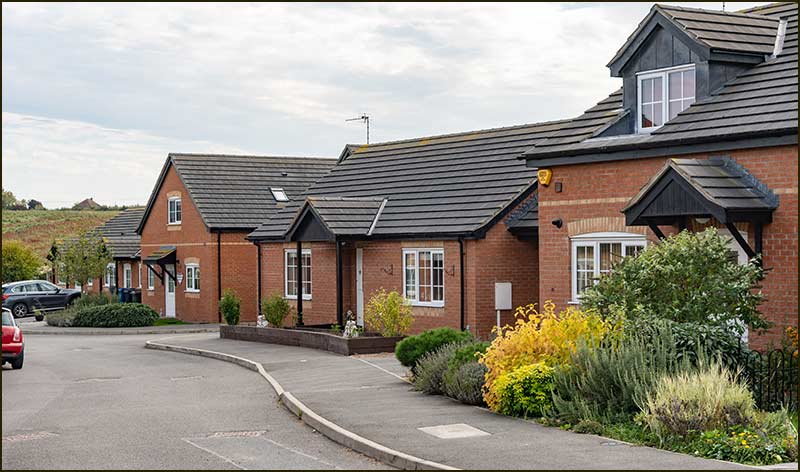Cropwell Bishop Streets: — Shelton Gardens (8-1-21)

Shelton Gardens was built about 8 years ago and is the only “garden” street in the village.
The Garden ending is unusual, but of no significance, merely an attractive alternative to Close or Avenue. The Shelton part of the name is more interesting.
Over the last 300 years, there have been many people living in Cropwell Bishop with a last name of Shelton. Through marriage, the name has persisted through several generations.
Before going on, let's pause and reflect on this last statement. If you had to explain to a visiting alien the logic of our custom in the UK of giving our offspring the last name of the father, rather than the mother, could you do it: I couldn’t.
As you read this story, imagine how different the family trees would look if it was the mother’s name that was passed on. Just saying.
Back to the Shelton name. Unlike Barlows Close, the street across the road, Shelton Gardens appears to refer to a particular Shelton character, not the family. That is fine, most of our street names do the same. The problem we have with Shelton Gardens is that whilst there have been several interesting members of the Shelton family over the years, none stand out as clearly being worthy of having a street named after them.
So, in effect, we have to look at the history of the street name in the same way as if it had been Sheltons Gardens — a street with a family name.
This is not as easy as it sounds. The Sheltons were, to be blunt, prolific breeders. Many Victorian families were big through necessity: the parents wanted to ensure that there were children around to look after them in their old age.
Since a large percentage of children died during childhood, through disease, malnutrition and accidents on the farm, in a factory or down the coal mine, there was clearly an incentive to produce a large number to start off with.
Nevertheless, the Sheltons generally managed to have large families with few losses. As an example, the family of Robert and Hannah Shelton in the mid 1900s was so big that, by the end, the children could have played a 6-a-side football match (the girls against the boys).
I have decided to describe a handful of members of the Shelton family. Sheltons have been living in Cropwell Bishop for 250 years but I can only write about ones I can find information on, and they tend to be those who lived in the 1900s . These people I have highlighted in red on the family tree.
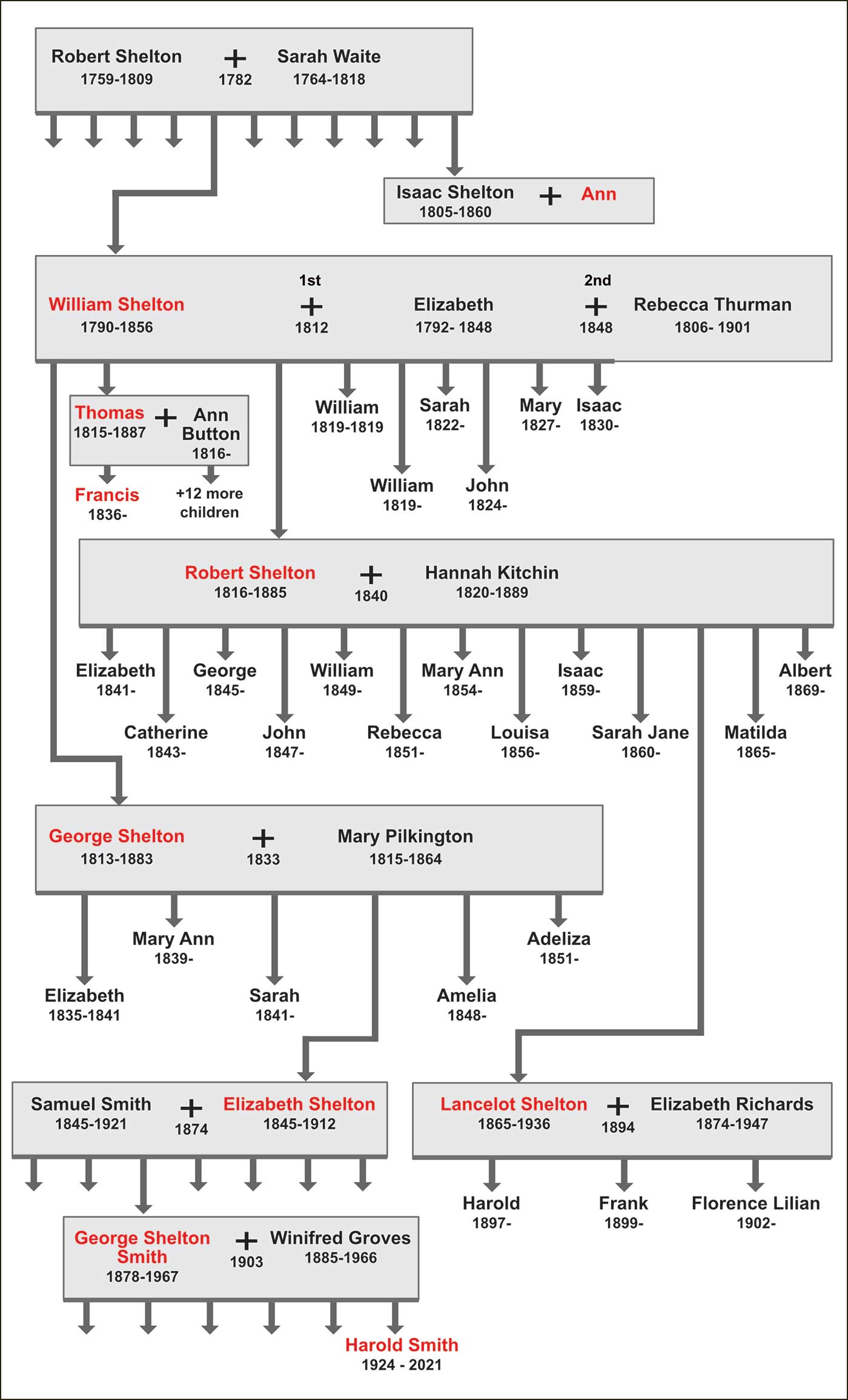

Robert Shelton
A Shelton first appeared on the Cropwell Bishop scene in the late 1700s when Robert Shelton married Cropwell Bishop girl, Sarah Waite, in 1782.
Robert was from Gedling but, after they married, they spent the rest of their lives in Cropwell Bishop. He was a farmer but does not appear to have been a land-owner.
He and Sarah firmly established their family in the village by having 11 children. At that time there were around 300 people living in the village so that is a sizeable contribution to the population – the equivalent to 80 children in today’s village.
Sadly, two of the children died at birth but, nevertheless, for a woman to survive 11 home births and then bring up 9 children, suggests a time of hardy mothers.
Then again, you could argue that these stories only include tough mothers because the weak ones didn't survive to pass on their genes: survival of the fittest, as followers of Charles Darwin would say 60 years later.
We do know something about Robert and Sarah’s eldest child, William.

William Shelton
William’s history is known because he became a successful farmer and eventually the owner of Shelton Farm. The farm was located in the centre of the village, near The Turn.
In 1804, when William was 14 years old, the Enclosure Act was applied to Cropwell Bishop and a map showing who was allocated land still survives – and none was owned by a Shelton.
If a Shelton had owned land, they would have been rewarded with a street named after them back in the 1970s, just like most of the other 1804 land-owners.
We know that in 1818, when William was 28 years old, he was following in the footsteps of his, then late, father and working in farming. He was married and already had 3 sons with his wife, Elizabeth.
It was in 1840, when he was 50, that he took on the tenancy of Fillingham Farm. The farm was opposite the church, on Church Street, where Ebenezer House now stands.
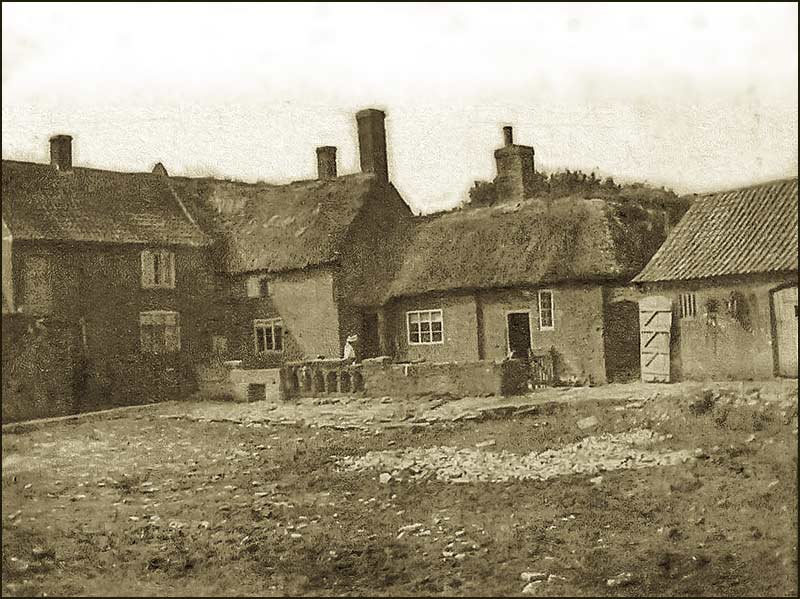
William appears to have been a sound businessman. As well as farming, he also operated as a timber carrier and probably had other business interests too.
Just 10 years after becoming the tenant of Fillingham Farm, he was able to pay £5420 to buy it, and the farm became known as Shelton Farm.
However, not everything went well for William. Eight years later his wife, Elizabeth, died: she was just 56 years old and the inscription on her grave suggests that she had suffered a long time.
William had 8 children but only 24-year-old John and 18-year-old Isaac, were still living at home, the rest having married. Maybe William was feeling lonely: within 8 months he married 42-year-old Rebecca Thurman from Tollerton.
Unsurprisingly, Rebecca outlived William and it was she who ensured that the Shelton Farm continued to operate when William died in 1856, just 8 years after his first wife, Elizabeth.
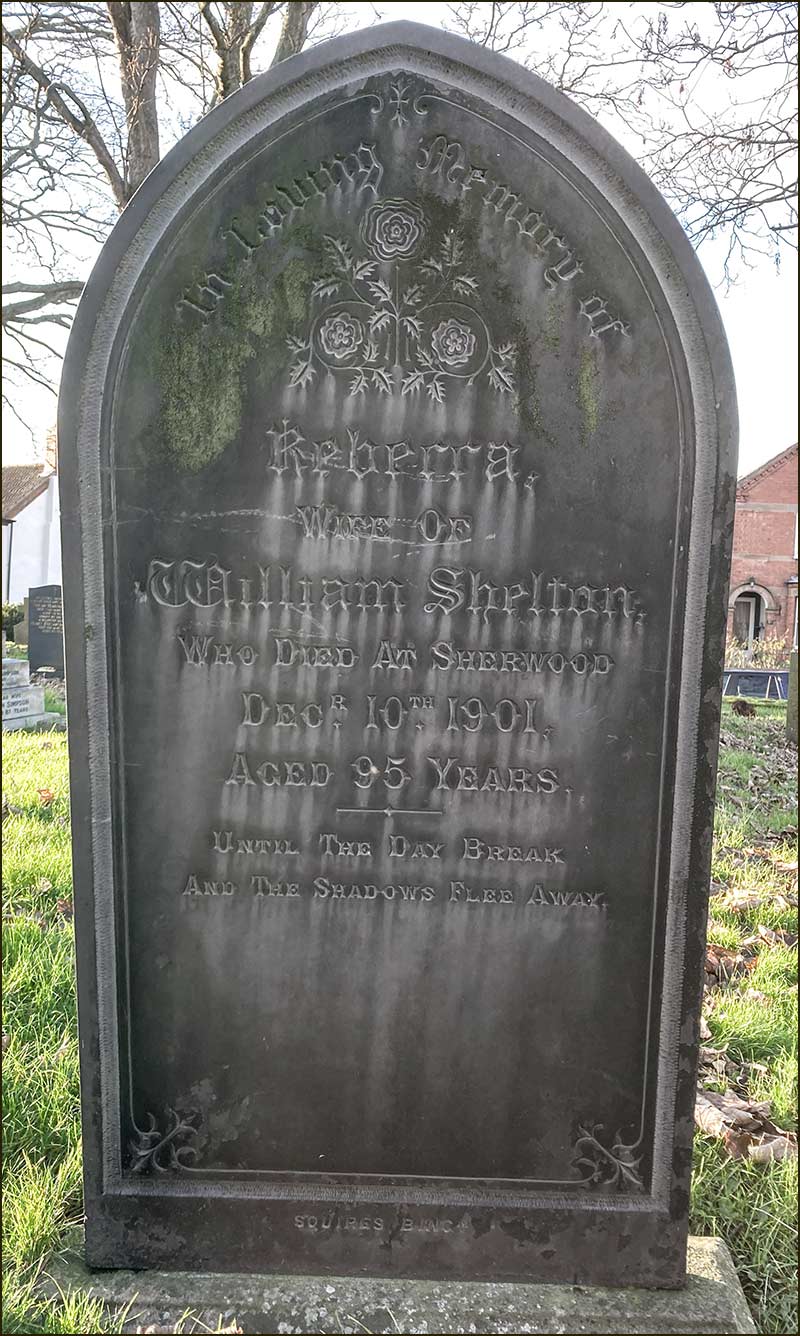

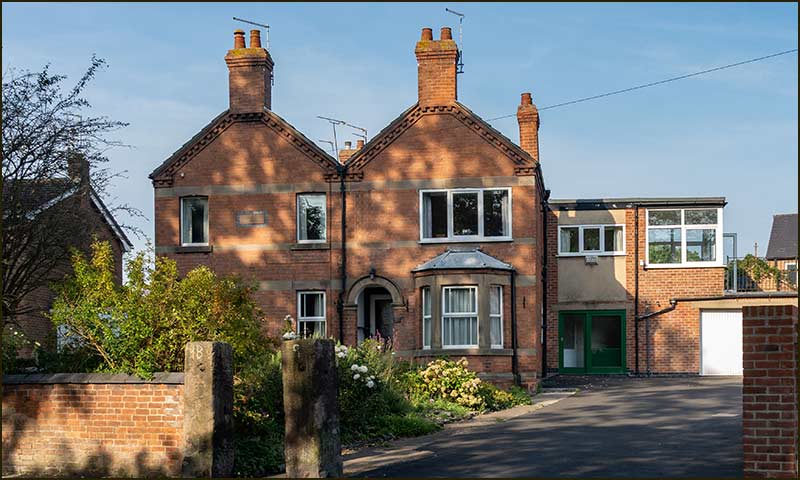

It has since been demolished and the space is now occupied by the new houses on Stackyard Close.
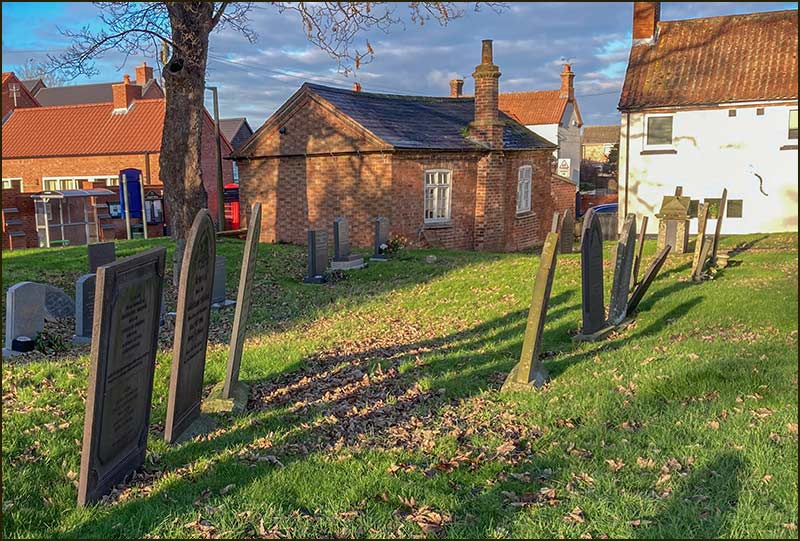

George Shelton
It was William’s eldest son, George, who inherited the farm and continued its development but it seems as though William’s widow, Rebecca was a great support.
It 1871 they were farming 206 acres and employed 6 labourers. George was not only a farmer, but also a Plaster Merchant and this necessitated employing more local people. The work must have been demanding. His wife had died in 1864 at the age of 49 and then he himself died in 1883 at the age of 70.
As was the custom in those days, George’s eldest son should have inherited the farm – or at least he would have done in normal circumstances.
George and his wife Mary had 6 children – but they were all girls. In the event, it was the fourth eldest daughter, Elizabeth, who took over the Shelton Farm or, I should say, it was her husband Samuel Smith who took it over.
In 1901, Rebecca died at the age of 95. The following year Shelton Farm was sold to village newcomer, Samuel Heaseldean. He demolished the farmhouse and had Ebenezer House built in 1904.

Ann Shelton
Ann was born in the tiny village of Antrobus in Cheshire in 1804 and in about 1828, she married Isaac Shelton, the youngest brother of William Shelton who had bought Shelton Farm. How she and Isaac discovered each other is a mystery.
They had a son, Thomas, in 1830 but, other than that, little is known of their married life. Ann was widowed in 1860 when Isaac died at the age of 55.
It was probably then that she moved to a small cottage that was attached to the front of the Shelton farmhouse. It was beside Little Lane that connected Mill Lane with Church Street and faced onto Church Street.
Ann Shelton ran a grocery shop from the cottage. Later, Cropwell Bishop got its first post office and it was included in her grocery shop. Ann, therefore, became the first post-mistress of Cropwell Bishop.
The building was demolished at the same time as the farmhouse in 1902 and the post office service moved to a shop at number 1 Nottingham Road at The Turn.
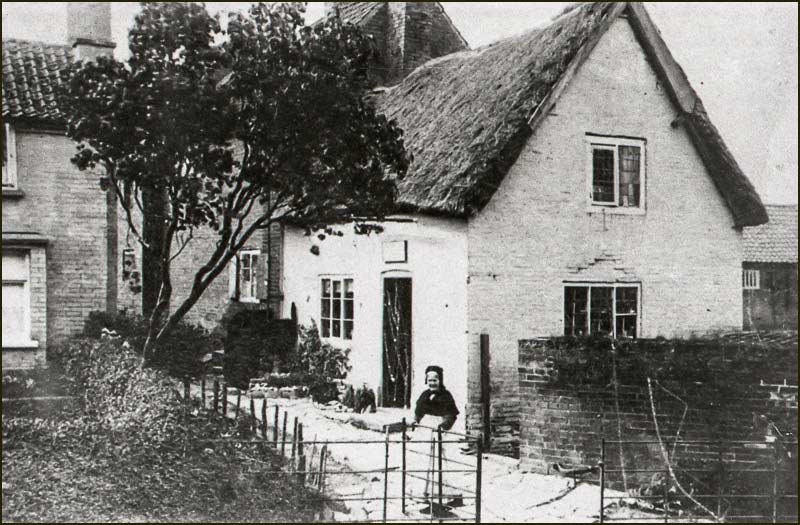
Post Mistress, Ann Shelton (1890s)

Elizabeth Shelton and Samuel Smith to the present day
In the street story of Church Street, I covered the history of Groves Cottage.
I described how it was one of the children of Elizabeth and Samuel Smith (George Shelton Smith) who moved into it with his wife and in-laws.
Their youngest child, Harold Smith, went on to live at Groves Cottage and so maintained the link with Robert Shelton who lived here 240 years ago. The link came to an end with Harold's death in April 2021 at the age of 96.
Of course, in reality, there must very many living links but to cover them would take many stories.

-Smith.jpg)

Robert Shelton
We have already seen how George Shelton continued the running of Shelton Farm on the death of his father, William. Now we will look at his younger brother, Robert Shelton.
Robert was born in 1816 and, when 24, he married a girl from Hoveringham, 20-year-old Hannah Kitchin. Robert was an agricultural labourer and the couple settled in Cropwell Bishop.
I wonder why they chose to live in Cropwell Bishop rather than Hoveringham. It seems to have been more common for couples to settle near the wife’s mother. This would have made sense to a woman who wanted her mother close at hand at the time of child births.
But, they didn’t and there does not appear to be any reason for Hannah to regret the decision.
She gave birth to her first child when she was 21 and went on to have a total of 13 children, the last one when she was 49 years old.

Their 11th child, a boy they name Lancelot, went on to marry a girl named Elizabeth Richards who was from Keyworth.
A return trip to Keyworth would have been quite a challenge in those days, but the coming together of Lancelot and Elizabeth is not a mystery.
In the street story of Barlows Close, the arrival in the village of butcher, Thomas Barnet Barlow of Keyworth, was described. He had married Sarah Richards in Keyworth and the 1891 Census shows that one of the people living with them was Sarah’s 17-year-old sister, Elizabeth.
Thomas moved his business and family to Cropwell Bishop soon after this and I think we can safely assume that young Elizabeth came with them. In 1894 she and Lancelot married and lived in Cropwell Bishop.
They had three children, Harold, Frank, and Florence-Lilian. And, most importantly, we have an excellent family photograph of them during the First World War.
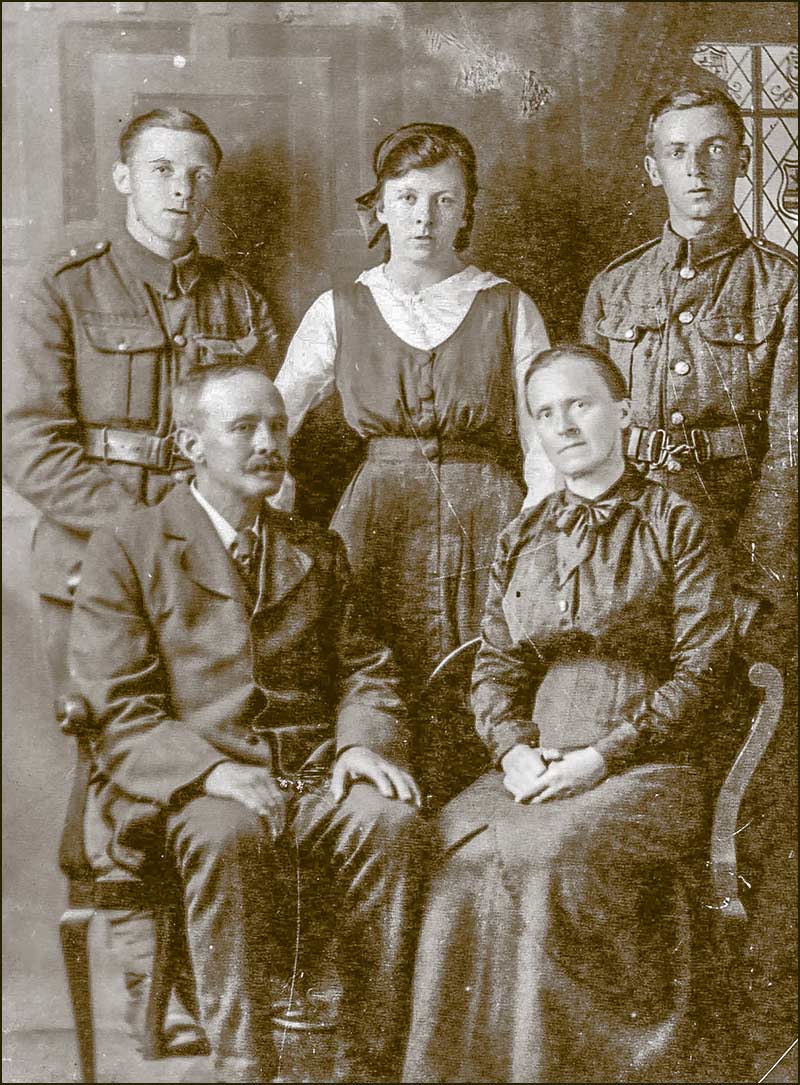
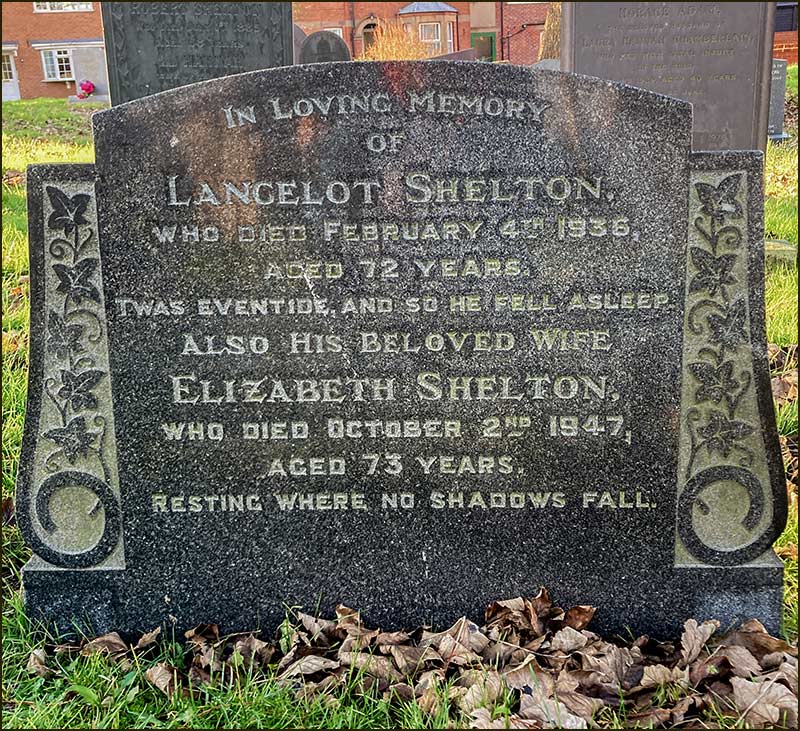

John Thomas Shelton
We must not forget one other Shelton who lived in Cropwell Bishop; John Thomas Shelton, often referred to as J.T. Shelton.
It will come as no surprise when I tell you that he is related to the other Sheltons we have been looking at, and that his branch of the family carried on the tradition of having lots of children.
His grandfather was Thomas Shelton, the second son of William Shelton — the one who established Shelton Farm.
If you look at the family tree above, you will see that Thomas married Ann Button and they had 13 children. Their second one was Francis Shelton and he went on to have 9 children with his wife Mary Ann Slater, the 7th of which was John Thomas Shelton. What a family!
Time to leave the past behind (is that possible?) and concentrate on John Thomas Shelton himself.
In the early 1900s he started a bakery business in Cropwell Bishop. It was not the only bakery in the village but his claim to fame was that his bread was made by machine. He used a small oil engine to power the drum that mixed his dough.
His bakehouse was near the church. Opposite the church gates is a small lane and the bakery was up there, on the left-hand side.
He would deliver bread within the village and also to nearby villages using a horse drawn two-wheeled bread-cart. On the sides he advertised his, ‘Machine Bakery’. John was assisted by his wife, Annie.
Annie Revill was from Southwell where, as a 7-year-old, she lived with her widowed mother, Mary, who was the inn-keeper of The George and Dragon Inn (now called The Bramley Apple Inn).
By the time she was 17, her mother had married George Bayley, who was a printer, and Annie worked as a dressmaker.
In 1901, when Annie was 27, she married 28 -year-old John Shelton and they moved into The Old Vicarage on Stockwell Lane. They lived there for the next 40 years. In 1911, Annie’s widowed mother was also living with them.
During those first years, John became the Churchwarden of the parish. This is a voluntary, unpaid post involving a wide range of responsibilities to ensure the smooth running of the church. He would have been considered the leading lay member of the congregation.
John fought in the First World War. Following the War, there is no record of his bakery business, the only bakery in the village being the one run by Herbert Simpson on Church Street.
What employment John had during those years, we don’t know, but he and Annie were very active in Cropwell Bishop.
During John’s absence during the War, Annie took over his Churchwarden tasks. She was later elected by parishioners to represent them as the “Peoples Warden” – and she continued doing so for the next 24 years.
Meanwhile, John became the organist at the church and continued without absence for 15 years.
In 1939, when he was 66, John listed his employment as ‘mental nurse’. We don’t know how long he had been a nurse.
We do know that the mental hospital at Saxondale – which is walking distance away, had been opened in 1902 and towards the end of the War, it was being used as a military hospital to treat soldiers with shell shock. Later, it reverted back to being a mental hospital. It was closed in 1988.
Could there be a link between John fighting in the War and working as a mental nurse. Did his experiences inspire him to help mentally ill people: we just don’t know.
John died in 1944.
I am fairly certain that Annie had died during the preceding 4 years because, in his will, he left all his money to a Charles John Kirk, Headmaster.
Charles Kirk was, in fact, the Head of Cropwell Bishop School at that time and lived at The School House in Cropwell Bishop – just across the road from where John lived.
I assume he had left his money to the School. John and Annie did not have any children.


A variety of characters have been traced in this street story.
What is fascinating is how different they were. Some were fortunate to have wealth and property passed on to them whilst some others had to battle to achieve what they felt was worthwhile.
In our own everyday life, we probably all complain about something or other that hasn't gone to plan, or about someone getting a bigger share than us. But, in terms of material comforts, convenience, freedoms and opportunities, we are far, far better off than the people in this story.
I am sure that every one of them would have envied our lives. But, are we any happier than they were; do we appreciate what we have?
I can't answer that; maybe you can have a go.
Tony Jarrow
Note:
Thanks to Anne Terzza and Pam Barlow for their help with this article.

Shelton Gardens in 2020
